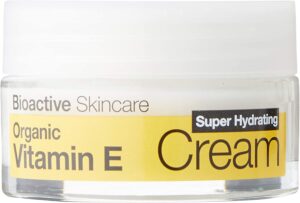Stretch marks are a type of scar that develops when our skin stretches or shrinks quickly. They appear as coloured streaks and are common in pregnancy, particularly in the last trimester.
Symptoms:
-
Smooth, raised, irritable and swollen lines.
-
Can be red, purple or bluish in colour.
-
The marks may appear in any of the following areas; stomach, breasts, upper arms, thighs and buttocks.
-
When you touch them, you might feel a slight ridge or indentation on your skin. They could also feel itchy or sore.
-
As the mark ages, it often flattens, becomes pale and irregular in shape with finely wrinkled surface known.
-
Stretch Marks are associated with psychological distress due to their appearance.
Causes:
-
Stretching of the skin around the growing foetus.
-
Stretching of the breast tissue due to changes during and after pregnancy.
-
A family history of stretch marks.
-
A history of delivering large babies or twins.
-
A higher body weight.
Here is what the evidence says about the treatment options:
Topical treatment cannot prevent the occurrence of stretch marks under specific circumstances such as pregnancy. This has been investigated by many studies and the same conclusion is always drawn. We have therefore looked at studies that have investigated whether you can reduce the appearance of the marks after they have appeared.
Vitamin A – evidence is limited for the use of Vitamin A. THIS study which is quite old had some positive results but it is hard to find any more recent studies supporting it’s use for stretch marks. THIS vitamin A cream has good reviews on Amazon. It is not advised that you use vitamin E products if you are pregnant or breastfeeding however.
Topical creams – evidence suggests that topical treatments have only mild effects on stretch marks. It is questionable, if creams and ointments with “specific ingredients” exert a significant and better improvement than simple moisturisers.
Aloe Vera – THIS study found positive effects from aloe Vera on scar tissue.
Sillicone gel – evidence supports the use of silicone gel for stretch marks. HERE is a silicone gel that we found that has really good reviews and is reasonably priced.
Silicone sheets – Similarly to silicone gel applications, silicone gel sheets were demonstrated to have a large and positive effect on pigmentation of hypertrophic burn scars. HERE are some gel sheets with really good reviews.![]()
Light & Laser therapy – evidence is in support of laser therapy although the evidence isn’t often of high quality. Light and laser therapies have shown improvements in the appearance of stretch marks, although it is uncertain which is best, and at what stage they should be used.
Microdermabrasion – there is evidence for the use of microdermabrasion, although more detailed and larger scale studies are needed to confirm the results.


